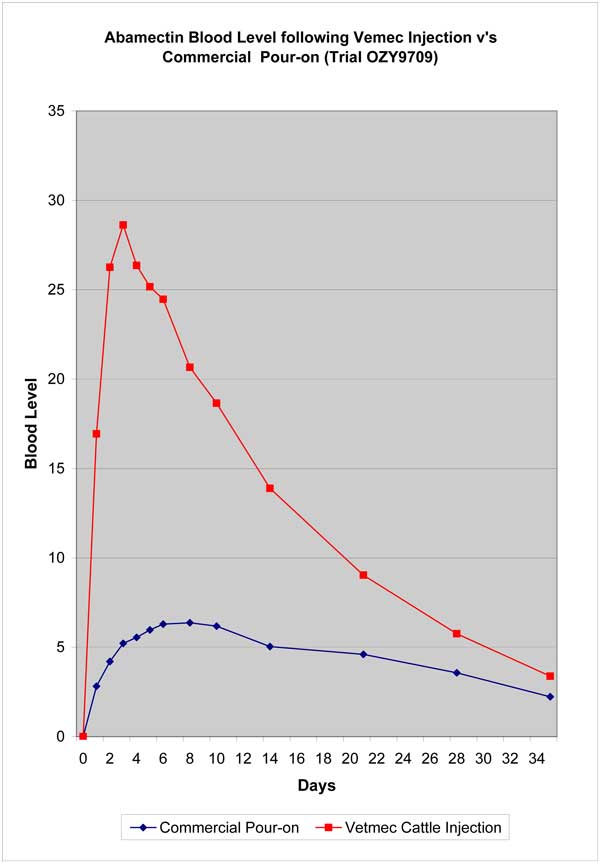BLOOD LEVEL COMPARISON | Vetmec Injection vs. Abamectin Pour-on
ABAMECTIN INJECTABLE (VETMEC ANTIPARASITIC CATTLE INJECTION) VERSES A REGISTERED ABAMECTIN ENDECTOCIDE
It is accepted that the therapeutic effect of a drug such as Abamectin is directly dependant on the bioavailability (time concentration curve) of the drug in the systemic circulation.
The bioavailability is a result of the rate and extent of absorption of the drug from its formulation and its metabolism and excretion from the body.
Anecdotally the extent and the rate of absorption of the active is often blamed by producers for the perceived variable results to pour-on treatments. Indeed the development of endectocide pour-on formulations have proved very challenging to the formulation chemists.
Administration by injection ensures that 100% of the dose is delivered to the subcutaneous area where it readily enters the blood stream.
In bioequivalent studies the parameters normally determined are:
- Mean Plasma Concentration, MC
- Maximum Plasma Concentration, C(max)
- Time to Maximum Concentration, T(max)
- Area Under the Curve, AUC
- Mean Residence Time, MRT
- Terminal Elimination Rate Constant, TERC
With respect to efficiency (killing power) the parameters or most importance are maximum concentration reached after administration, C(max), and the area under the curve, AUC.
The following data is taken from the Chemvet Study OZY9709 where Abamectin blood levels following Vetmec injection was compared to a APVMA registered commercial pour-on formulation.
Summary of Pharmacokinetic Parameters for Each Formulation


For the anthelmintic Abamectin, C(max) and AUC would be regarded as the most critical of the bioavailability measures with respect to the relative efficiency (killing power) of the two formulations and this is shown graphically below:

